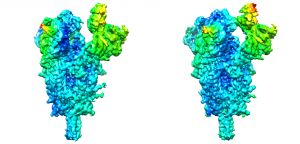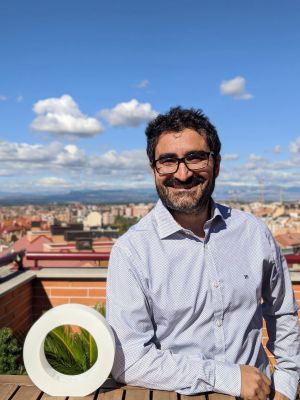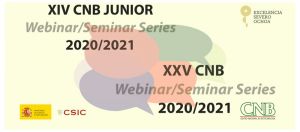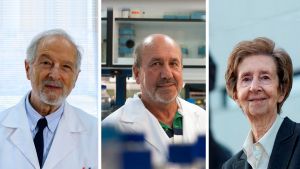
Nuevos análisis computaciones determinan la flexibilidad de la proteína de la espícula (Spike) del SARS-CoV2
Esteban Veiga receives the XIX FERO Grant for his research in Breast Cancer
Un estudio muestra que los modelos tradicionales no pueden predecir con certeza la evolución de una epidemia
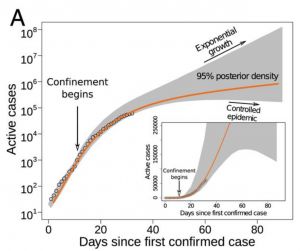
- Los modelos epidemiológicos SIR, utilizados habitualmente para conocer el comportamiento de epidemias, solo pueden ofrecer un pronóstico probable y variable
- La imposibilidad de predecir con certeza es una propiedad del proceso de propagación de la epidemia, más allá de la calidad de los datos o de las aproximaciones de los modelos
Un nuevo estudio muestra que los modelos epidemiológicos tradicionales, como los de tipo SIR empleados para pronosticar el comportamiento de epidemias, no pueden predecir con certeza la evolución de una epidemia, ni el pico ni el final, mientras la epidemia está teniendo lugar. “A lo más que podemos aspirar es a obtener predicciones probabilísticas, como las del tiempo, donde se nos informe de con qué probabilidad se puede alcanzar el pico antes de una fecha dada, por ejemplo”, explica la investigadora Susanna Manrubia, del Centro Nacional de Biotecnología (CNB-CSIC), que ha coordinado el estudio, publicado en Proceedings of the National Academy of Sciences (PNAS). El trabajo es fruto de la colaboración de los investigadores Susanna Manrubia y Saúl Ares, del CNB-CSIC; José A. Cuesta, de la Universidad Carlos III; y Mario Castro, de la Universidad Pontificia Comillas.
The new CNB Cycle and Junior seminar season start this week
Un estudio del CNB determina que los límites del gen responsable del albinismo OCA1 son clave para regular su expresión
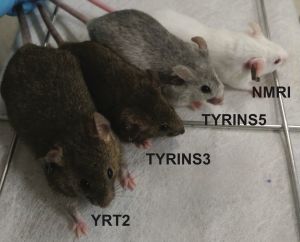
- Un nuevo trabajo de investigación del CNB-CSIC y el CIBERER determina los límites del gen de la tirosinasa de ratón, que le permiten desarrollar su patrón de expresión.
- El trabajo es fruto de la comparación de modelos modificados genéticamente de ratón generados gracias a los avances en técnicas de edición genética como el CRISPR.
El contenido genómico de cada una de nuestras células es idéntico, y sin embargo, las diferentes células del cuerpo presentan morfologías variadas y desarrollan funciones tan distintas como la contracción muscular o la visión. Esto se debe a los diferentes patrones de expresión de los genes en cada tipo celular, una característica fundamental durante el desarrollo de un organismo. Aunque el ADN sea el mismo, existen “interruptores” (los elementos reguladores del genoma no codificante) que definen la organización genómica y tiene una gran influencia en los niveles de expresión de los genes.
Uno de los genes más utilizados como modelo para entender los procesos de “encendido” o “apagado” de un gen es el de la tirosinasa, qué produce la enzima responsable de la biosíntesis de la melanina. Las mutaciones en este gen son las más comunes en el albinismo, una condición genética poco frecuente que produce deficiencias en la visión y que además puede afectar a la pigmentación de la piel, pelo y ojos. Sin embargo, debido a que su deficiencia no tiene otros efectos perjudiciales en el organismo, se ha utilizado desde los años 90 como modelo de estudio de genes de mamíferos en ratones para la realización de experimentos de transgénesis e ingeniería genética que van desde la microinyección de ADN al desarrollo de la técnica CRISPR.
Ahora, un artículo publicado en la revista Scientific Reports por investigadores del Consejo Superior de Investigaciones Científicas y el Centro de Investigación Biomédica en Red de Enfermedades Raras (CIBERER) revela la estructura genómica completa del gen de la Tirosinasa (Tyr) y describe sus límites, a derecha e izquierda, en el genoma, que permiten mantener la expresión correcta del gen en los dos tipos celulares de ratón donde se expresa este gen: los melanocitos y el epitelio pigmentado de la retina.
José María Valpuesta, new president of the European Microscopy Society

- José María Valpuesta, professor at the CNB-CSIC has been elected new president of the European Microscopy Society for the next four years.
Valpuesta, head of the Macromolecular Structure Department at the CNB, has developed his research in the study of the molecular structure and function of chaperones, proteins involved in the folding and degradation of other cellular proteins. During these processes, chaperones form transient macromolecular complexes with different cellular proteins, and their composition can be determined through cryoelectron microscopy and image processing analysis, techniques widely used in Valpuesta´s research group. He has contributed with more than 160 research articles, supervised many doctoral theses, organized microscopy workshops and meetings, and participated in evaluations committee for European isntitutions.
In addition to being one of the main promoters of the Bioimagen platform at the CNB, Valpuesta has held other scientific management positions such as director and deputy director at the CNB-CSIC, president of the Spanish Society of Microscopy and has received awards such as the III Bruker award of the Spanish Society of Biophysics and the 1st FEI award of the European Society of Microscopy.
European Microscopy Society (EMS)
The Society, founded in 1998, brings together 25 national European microscopy societies representing more than 6300 researchers across Europe. It aims to promote the use and the quality of advanced microscopy in all its aspects in Europe, with particular reference to developments in instrumentation and methodology and novel applications of all types of microscopy. Although light, electron and scanning-probe microscopy are expected to occupy a large place in the activities of the Society, no form of microscopy is excluded.
Un estudio del CSIC descubre una estrategia terapéutica eficaz frente a bacterias resistentes
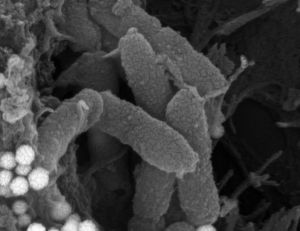
- El trabajo se basa en la comprensión de la evolución para diseñar tratamientos frente a bacterias como Pseudomonas aeruginosa, con baja sensibilidad a los antibióticos
- Las infecciones provocadas por bacterias resistentes a múltiples fármacos constituyen una preocupación creciente para la salud humana
Los antibióticos han supuesto uno de los mayores avances para la medicina moderna. De ahí que la resistencia a estos medicamentos sea actualmente una de las principales amenazas para la salud mundial, según la Organización Mundial de la Salud (OMS). Este problema es consecuencia de la capacidad de adaptación y evolución de las bacterias patógenas cuando se enfrentan a los antibióticos.
Los científicos del CNB-CSIC Luis Enjuanes y Mariano Esteban, Medalla al Mérito en la Investigación
OPEN CALL: 6th EDITION OF SCIENCE BY WOMEN PROGRAM

The Women for Africa Foundation (FMxA), in line with its mission of contributing to the development of Africa through the drive of its women, is launching the 6th Edition of SCIENCE BY WOMEN programme, with the aim to promote African women’s leadership in scientific research and technology transfer and to foster the capacity of the research centres in their home countries. The main goal is to enable African women researchers and scientists to tackle the great challenges faced by Africa through research in health and biomedicine, sustainable agriculture and food security, water, energy and climate change.
The programme´s ultimate goal is to enable African women researchers to play a leading role in the transition of Africa to a knowledge-based and innovation-led economy through research that can be transferred into products, processes, services and technologies having impact on people´s lives. To achieve this ambitious goal, FMxA collaborates with 19 Spanish Centres of Excellence, whose prestige is unanimously recognized throughout Spain and internationally, thereby ensuring excellence in scientific research in various fields.
Each of these centres will host 1 senior woman researcher with at least 3 years of post-doctoral experience for a six-month fellowship. Applications will be subjected to a rigorous selection process, evaluating the academic merits and leadership of the applicants as well as the scientific quality and expected impact of their research projects. Selected candidates will receive training and integration in a dynamic, multidisciplinary and highly competitive working team, where they will be able to develop their research projects and acquire complementary skills, empowering them to transfer their research results into tangible economic and social benefits.
Deadline for applications is September 30, 2020. EXTENDED UNTIL THE 20th OF OCTOBER
Only applications submitted in English via the Science by Women website will be accepted
El CSIC logra un test de anticuerpos que detecta la inmunidad frente a Covid-19 con más del 98% de fiabilidad
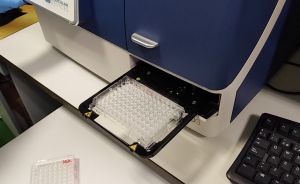
Un equipo de investigadores del Consejo Superior de Investigaciones Científicas (CSIC) ha desarrollado nuevos test de anticuerpos que permiten conocer la inmunidad frente a Covid-19 con un 98% de fiabilidad, según estudios realizados en colaboración con los Servicios de Inmunología del Hospital Universitario de La Princesa y del Hospital Universitario de La Paz. Los test serológicos son fundamentales para determinar quién ha contraído el virus y está inmunizado. Los test serán producidos por la empresa española Immunostep, en formato kit ELISA. Se prevé que en el plazo de un mes y medio los hospitales españoles dispongan de estos test de diagnóstico.
El kit ELISA es una de las tecnologías más fiables para los análisis serológicos de la población. Está basado en procedimientos que se realizan habitualmente en hospitales y laboratorios especializados. Permiten determinar la concentración y el tipo de anticuerpos generados durante una infección. La duración de esta prueba es de unas 2 horas y se puede automatizar.
Durante los meses de confinamiento, cuatro grupos de investigación del Centro Nacional de Biotecnología (CNB-CSIC) han trabajado a marchas forzadas para poner a punto test serológicos que permitan conocer con fiabilidad quién contrajo el coronavirus y por tanto está inmunizado. Este análisis es crucial, puesto que una gran parte de contagiados por Covid-19 cursan la enfermedad sin síntomas o con síntomas muy leves.
COOKIES POLICY
A cookie is a text file that is stored on your computer or mobile device via a web server and only that server will be able to retrieve or read the contents of the cookie and allow the Web site remember browser preferences and navigate efficiently. Cookies make the interaction between the user and the website faster and easier.
General information
This Website uses cookies. Cookies are small text files generated by the web pages you visit, which contain the session data that can be useful later in the website. In this way this Web remembers information about your visit, which can facilitate your next visit and make the website more useful.
How do cookies?
Cookies can only store text, usually always anonymous and encrypted. No personal information is ever stored in a cookie, or can be associated with identified or identifiable person.
The data allow this website to keep your information between the pages, and also to discuss how to interact with the website. Cookies are safe because they can only store information that is put there by the browser, which is information the user entered in the browser or included in the page request. You can not run the code and can not be used to access your computer. If a website encrypts cookie data, only the website can read the information.
What types of cookies used?
The cookies used by this website can be distinguished by the following criteria:
1. Types of cookies as the entity that manages:
Depending on who the entity operating the computer or domain where cookies are sent and treat the data obtained, we can distinguish:
- Own cookies: are those that are sent to the user's terminal equipment from a computer or domain managed by the editor itself and from which provides the service requested by the user.
- Third party cookies: these are those that are sent to the user's terminal equipment from a machine or domain that is not managed by the publisher, but by another entity data is obtained through cookies.
In the event that the cookies are installed from a computer or domain managed by the editor itself but the information collected by these is managed by a third party can not be considered as party cookies.
2. Types of cookies as the length of time that remain active:
Depending on the length of time that remain active in the terminal equipment can be distinguished:
- Session cookies: cookies are a type designed to collect and store data while the user accesses a web page. Are usually used to store information that only worth preserving for the service requested by the user at any one time (eg a list of products purchased).
- Persistent cookies: cookies are a type of data which are stored in the terminal and can be accessed and treated for a period defined by the head of the cookie, and can range from a few minutes to several years.
3. Cookies types according to their purpose:
Depending on the purpose for which the data are processed through cookies, we can distinguish between:
- Technical cookies: these are those that allow the user to navigate through a web page or application platform and the use of different options or services it exist as, for example, control traffic and data communication, identify the session, access to restricted access parts, remember the elements of an order, make the buying process an order, make an application for registration or participation in an event, use security features while browsing store content for dissemination videos or sound or share content via social networks.
- Customization cookies: these are those that allow the user to access the service with some general characteristics based on a predefined set of criteria in the user terminal would eg language, the type of browser through which you access the service, the locale from which you access the service, etc.
- Analysis cookies: they are those that allow the responsible for them, monitoring and analyzing the behavior of users of the web sites that are linked. The information gathered through such cookies are used in measuring the activity of web sites, application or platform and for the profiling of user navigation of such sites, applications and platforms, in order to make improvements function data analysis how users use the service.
Management tool cookies
This Website uses Google Analytics.
Google Analytics is a free tool from Google that primarily allows website owners know how users interact with your website. Also, enable cookies in the domain of the site in which you are and uses a set of cookies called "__utma" and "__utmz" to collect information anonymously and reporting of website trends without identifying individual users..
For statistics of use of this website use cookies in order to know the level of recurrence of our visitors and more interesting content. This way we can concentrate our efforts on improving the most visited areas and make the user more easily find what they are looking for. On this site you can use the information from your visit for statistical evaluations and calculations anonymous data and to ensure the continuity of service or to make improvements to their websites. For more details, see the link below privacy policy [http://www.google.com/intl/en/policies/privacy/]
How to manage cookies on your computer: disabling and deleting cookies
All Internet browsers allow you to limit the behavior of a cookie or disable cookies within settings or browser settings. The steps for doing so are different for each browser, you can find instructions in the help menu of your browser.
If you decline the use of cookies, since it is possible thanks to the preferences menu of your browser or settings, reject, this website will continue to function properly without the use of the same.
Can you allow, block or delete cookies installed on your computer by setting your browser options installed on your computer:
- For more information about Internet Explorer click here.
- For more information on Chrome click here.
- For more information about Safari click here.
- For more information about Firefox click here.
Through your browser, you can also view the cookies that are on your computer, and delete them as you see fit. Cookies are text files, you can open and read the contents. The data within them is almost always encrypted with a numeric key corresponding to an Internet session so often has no meaning beyond the website who wrote it.
Informed consent
The use of this website on the other hand, implies that you paid your specific consent to the use of cookies, on the terms and conditions provided in this Cookies Policy, without prejudice to the measures of deactivation and removal of cookies that you can take, and mentioned in the previous section.

